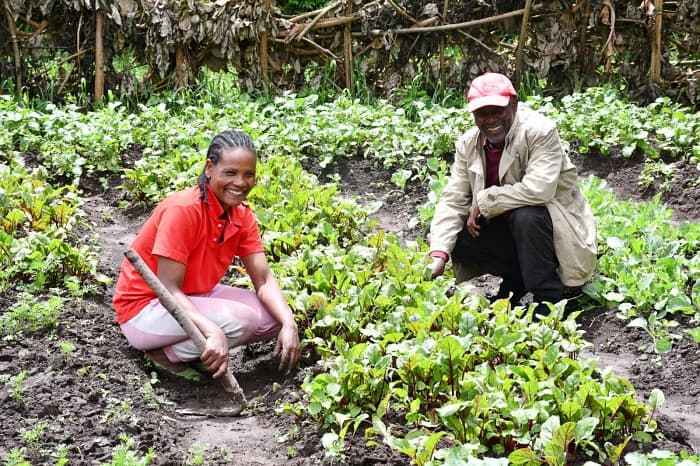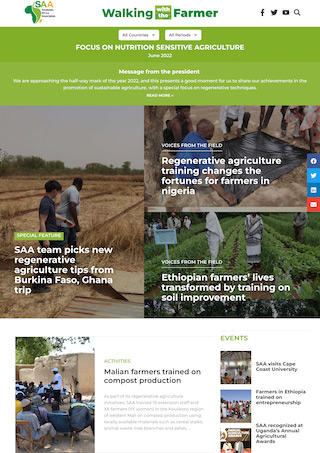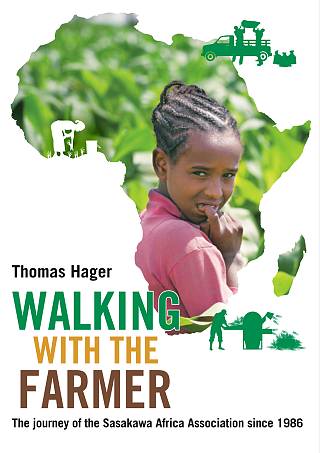In Ethiopia, the agricultural sector remains a key driver of economic growth and poverty alleviation. Over the past decade, agricultural productivity has experienced significant growth, largely thanks to increased adoption of improved seeds and fertilizers and enhanced farm management techniques. However, gains have been restricted to select commodities, and yield growth lags food security and industrial demands, hindered by underdeveloped markets that impede farmers’ returns on investment. Limited access to quality inputs, finance, and effective market systems, along with inadequate research and extension services, continues to curb productivity. Meanwhile, soil degradation, climate change, fertilizer shortages and escalating costs exacerbate these ongoing challenges.
The Sasakawa Global 2000 Ethiopia (SG 2000-Ethiopia) program was launched in 1993 under the umbrella of the Sasakawa Africa Association (SAA), with funding from The Nippon Foundation. Designed to strengthen the country’s agricultural extension system, the program’s goals included upskilling extension agents and smallholder farmers, and promoting locally tailored agricultural solutions to bolster production, achieve food security and boost smallholder incomes. Since 1993, the program has made real progress, with crop production tripling in Ethiopia due to collaborative efforts between SAA and government initiatives. However, recurring drought and population growth remain persistent obstacles.
In 2010, SG 2000-Ethiopia underwent a notable transformation, aligning its focus with SAA's revised approach to agricultural value chains. While crop productivity remained central, the revamped strategy embraced a comprehensive value chain approach, highlighting areas like post-harvest management, agro-processing, and market linkages. It recognized the importance of reaching rural youth and delivering inclusive advisory services, especially for women. The strategy also prioritized the strengthening of farmer organizations, broadening market access and fostering public-private partnerships.
In its Strategy 2021-2025, the organization, now rebranded as SAA-Ethiopia, is embarking on a transformative journey. Building on past achievements and mindful of emerging challenges, it is charting a path towards more sustainable and resilient food systems in Ethiopia.

Key Achievements
- Laid the foundation for the Ministry of Agriculture (MoA)'s launch of the National Agricultural Extension Intervention Program (NAEIP) in 1995, expanding SAA’s approach nationally. SAA also advocated for the establishment of 25 Agricultural, Technical and Vocational Education and Training (ATVETs) centers, and the training and deployment of over 60,000 Development Agents (DAs) in collaboration with the government.
- Introduced the Farmers Learning Platform (FLP) model, enhancing extension agents’ and farmers’ knowledge and skills, promoting peer-to-peer learning among farmers, facilitating technology adoption, and boosting productivity.
- Pioneered the introduction and promotion of Conservation Tillage (CT) practices for maize, wheat, teff and sorghum in collaboration with partners.
- Introduced rice to selected locations of Tigray, Oromia (Chewaka), SNNPR (Guraferda), and Somali region (Gode), while advocating for the adoption of NERICA varieties.
- Promoted line planting and transplantation techniques for tef, Quality Protein Maize (QPM) and striga tolerant sorghum. Also promoted urea deep placement, potassium fertilizer application, water harvesting and irrigation methods, alongside horticulture, livestock and permagardening initiatives and other related practices.
- Pioneered the introduction of cost-effective storage technologies, such as PICS Bags in collaboration with Purdue University, along with the promotion of small-to-medium scale postharvest agricultural machinery, particularly crop threshers and shellers.
- Established Postharvest Extension Learning Platforms (PHELPs) in 66 Farmer Training Centers (FTCs).
- Established and strengthened more than 450 Agri-enterprises, encompassing Community Based Seed Multiplication (CBSM) groups, agro-input dealers, youth group postharvest mechanization service providers, agro-processing enterprises (APEs), Community Savings for Investment in Agriculture (CSIAs) and Commodity Associations (CAs).
- Capacitated 220 intervention sites with digital equipment and facilities, reaching over 290,000 individuals through digital agricultural extension interventions.
- Implemented an innovative mid-career education program for extension agents, resulting in the graduation of over 2,000 agents with bachelor’s degrees and higher from nine universities.
- Reached over 4.4 million farmers and other beneficiaries through technology demonstrations, training, and field days.















